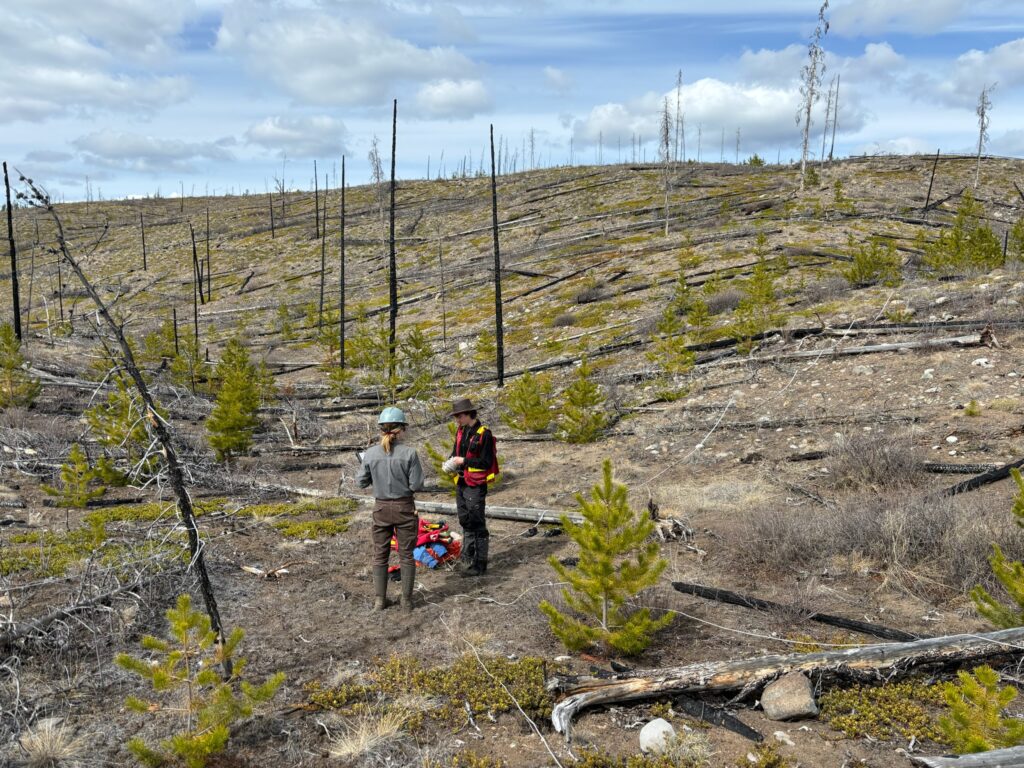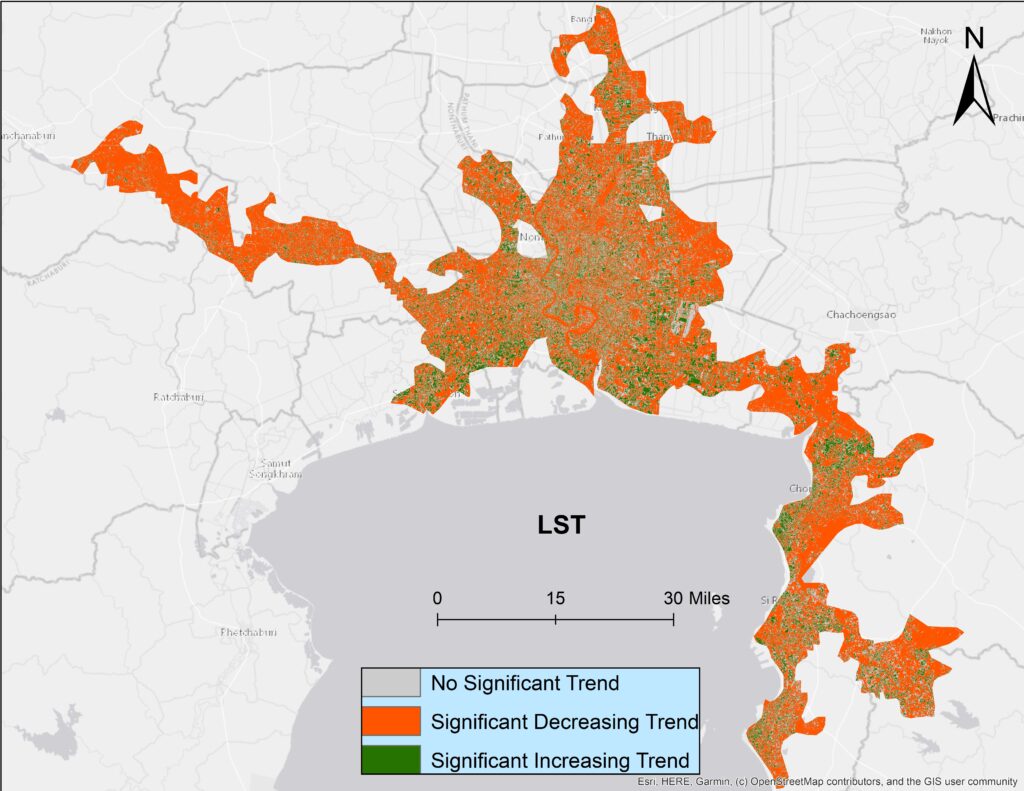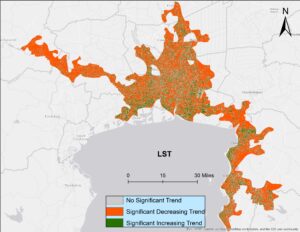Last Thursday, Amazon Web Services (AWS) announced that it is now hosting Landsat 8 imagery on its publicly accessible Simple Storage Service (S3). With help from the White House Office of Science and Technology Policy and the U.S. Geological Survey—manager of the vast Landsat archive—AWS has made over 80,000 Landsat 8 scenes (~85 Tb worth of data) available as one of its AWS Pubic Data Sets, and hundreds of Landsat 8 scenes are being added daily—as they are collected, they are added. Each spectral band of each Landsat scene is available as a stand-alone GeoTIFF.

The AWS Public Data Sets infrastructure is a “centralized repository of selected public data sets that can be integrated into AWS cloud-based applications to reduce the time and cost associated with transferring large data sets.”
Jed Sundwall, writing for the Amazon Web Services Official Blog, stated “As we said in December, we hope to accelerate innovation in climate research, humanitarian relief, and disaster preparedness efforts around the world by making Landsat data readily available near our flexible computing resources. We have committed to host up to a petabyte of Landsat data as a contribution to the White House’s Climate Data Initiative. Because the imagery is available on AWS, researchers and software developers can use any of our on-demand services to perform analysis and create new products without needing to worry about storage or bandwidth costs.”
In 2013, AWS teamed together with NASA’s Earth Exchange and USGS to offer the Landsat Global Land Survey data set (s3://nasanex/Landsat). This data set included mostly cloud free Landsat images covering the globe for four distinct time periods: the mid-1970s, and circa 1990, 2000, and 2005. The new Landsat on AWS public data set will offer new Landsat 8 data and eventually selections of historical Landsat data (up to 1 Pb).
In 2010, Google Earth Engine announced that it would host Landsat 30 m data (from 1984–2012). At that time the then-USGS Director, Marcia McNutt, wrote: “Landsat has become, over the years, a vital reference worldwide for understanding scientific issues related to land use and natural resources. With its long term historical record of the entire globe and widely recognized high quality of data, Landsat is valued all over the world as the “gold standard” of land observation.”
This past December, Secretary of the Interior, Sally Jewell, speaking of the Climate Data Initiative’s goal to share data including Landsat, said “By unleashing the power of our vast and open data resources, the Climate Data Initiative helps spark private sector innovation and will leverage resources for those on the front lines who are dealing with climate change. We are pooling into one place data from across the federal government to make it more accessible to the public and we hope our efforts will inspire other countries to follow suit.”
Any use of trade, firm, or product names does not imply endorsement by the U.S. Government.
Related Quotes to Note:
“Because of Landsat’s global purview and long history, it has become a reference point for all Earth observation work and is considered the gold standard of natural resource satellite imagery.”
“Many of our customers’ work couldn’t be done without Landsat.”
“We hope to accelerate innovation in climate research, humanitarian relief, and disaster preparedness efforts around the world by making Landsat data readily available near our flexible computing resources.”
— Jed Sundwall, Amazon Web Services Official Blog, Mar 19, 2015
“Landsat 8 is an incredible resource for global change research and has been used in a diverse array of scientific endeavors including the monitoring of deforestation, population growth, and glacier recession.”
–Bruce Tannenbaum, MATLAB Image Processing Blog
“Landsat sees the earth in a unique way. It takes images of every location in the world to reveal earth’s secrets, from volcanic activity to urban sprawl.”
“Landsat’s work is epic in scale. In 43 years, it has amassed over a petabyte of data, with over 4 million scenes and counting.”
—Esri
“Landsat 8 imagery is an incredibly powerful resource. It is some of the most valuable open data produced by the US Government. Our partners rely on Landsat data for everything from evaluating droughts to tracking conflict.”
—Ian Schuler, DevelopmentSEED Blog
“Landsat is history’s longest-running Earth imaging project. Its enormous data set cements it as an industry standard.”
—Frank Warmerdam, Planet Labs’ Planet Pulse Blog
Further Reading: Exciting ways Landsat data are being used:
+ MATLAB, Landsat 8, and AWS Public Data Sets, MATLAB Image Processing Blog
+ Unlock Earth’s Secrets, Esri
+ Making ‘Landsat on AWS’ Accessible, Esri ArcGIS Resources Blog
+ Powering Landsat Power Tools, DevelopmentSEED
+ Landsat-live goes live, MapBox Blog
+ Landsat 8 Data is Available on Amazon Web Services! How This Helps Us…, PlanetLabs
+ Landsat 8 Cloud Map, CartoDB
+ Landsat in Love with QGIS: the newest coup from Luca, Digital Geography blog
+ Download Landsat 8 Images with Semi-Automatic Classification Plugin v.4 for QGIS, via YouTube
Related Stories:
+ Big Data Helps Scientists Dig Deeper, NASA Earth Observatory
+ Unleashing Climate Data and Innovation for more Resilient Ecosystems, White House OSTP
+ Roam the World in (Almost) Real Time, The Atlantic’s CityLab
+ Amazon Web Services hosts Nasa climate-change images in the cloud, ComputerWeekly
+ Landsat 8 Satellite Imagery Available for Free Via Amazon Web Services, GIS Lounge
+ Landsat data now on Amazon Web Services, Google Earth Blog
+ Researchers get free satellite images from Amazon Web Services, Canadian IT News
+ NASA Brings Earth Science ‘Big Data’ to the Cloud with Amazon Web Services
+ Wrangling a Petabyte of Data to Better View the Earth
+ Maps for Good: Saving Trees and Saving Lives with Petapixel-Scale Computing
+ Google Earth Engine and Landsat
+ USGS Director Emphasizes Landsat’s Role in Google’s Earth Engine






